CHABAD-LUBAVITCH JEWISH LEARNING CENTRE
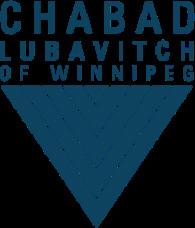
HANDBOOK PASSOVER



NISSAN 15–22, 5784 APRIL 22–30, 2024
Foreword
Passover, the joyous Jewish festival of freedom, begins this year on Monday evening, April 22, and continues through Tuesday evening, April 30. It marks our ancestors’ liberation from Egyptian bondage and the birth of our nationhood and special relationship with G-d. The festival’s highlight is the seder (ritual meal), observed on Monday evening, April 22, and repeated on the following night.
Jewish calendar dates do not begin at midnight, but earlier—at nightfall. Not insignificantly, this allows Jewish days to fully progress from darkness (night) to light (day), a theme especially native to Passover eve: Our national experience began with darkness of exile and the nightmare of bondage, before maturing into freedom and light (the receiving of the Torah). In our own lives, we attempt to replicate this progress when celebrating Passover—to escape from internal darkness, inflicted by self-centeredness and servitude to baser instincts, and to emerge into a liberating existence focused on purpose. In this way, Passover empowers our personal exodus.
The following pages provide impetus for this experience. Fascinating Passover insights, designed to inform and inspire, are paired with practical guidance to facilitate a meaningful commemoration of our past, while supplying liberating tools for the present.
Our goal is to produce results that endure: Although some editions of the Haggadah include a concluding declaration—“We have reached the end of the Passover seder”—other editions pointedly shun that notion. For all concur that our inspiring experience is supposed to linger and positively influence us for the rest of the year, until we are ready to leap further on the following Passover. The messages contained in this pamphlet encourage us to head into Passover prepared to never leave, for the personal liberation we will experience is as valuable and immutable as the miraculous disintegration of Egyptian bondage and the gift of divinely guided nationhood that flourishes until today.
Best wishes for a festival of liberating inspiration,
Rabbi Avrohom Altein
ה״ב



Contents 4 Exile and Redemption 6 Passover Messages from the Lubavitcher Rebbe 8 Passover Checklist 10 The Eight Items of the Seder 11 The Fifteen Steps of the Seder 12 Essential Passages of the Haggadah 14 Seder Interaction 16 The Haggadah Throughout History 18 Passover Insights on Education © 2024 The Rohr Jewish Learning Institute 11 10 12 This booklet contains sacred writings. Please do not deface or discard.
Exile and Redemption

1743 BCE
G-d strikes a covenant with Abraham known as the “Covenant between the Parts.” G-d informs Abraham that his children will be enslaved in Egypt and then return to Israel to inherit the land.
1533 BCE
On Rosh Hashanah, Pharaoh has 2 disturbing dreams and Joseph, known to interpret dreams, is brought before Pharaoh. Joseph’s interpretation foretells of 7 years of plenty followed by seven 7 of famine. He advises a nationwide food storage program. Pharaoh is impressed and appoints Joseph as viceroy of Egypt.

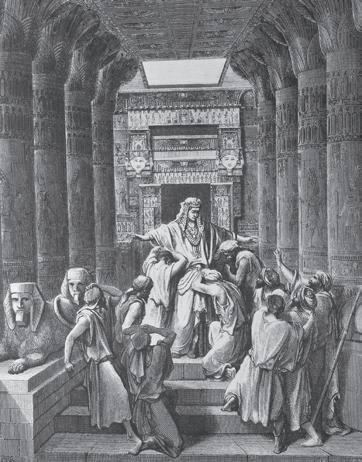
1523 BCE
After 2 years of famine, Jacob and his family come to Egypt, where Joseph provides for them and where they are treated with honor as Joseph’s family.
1400 BCE
The conditions of Jewish slavery grow exceedingly harsh and bitter.


1545 BCE
Abraham’s grandson, Jacob, has 12 sons, including Joseph. The brothers sell Joseph into slavery and he is taken to Egypt. Thus begins the saga of Jewish slavery in Egypt.
1429 BCE
Levi, Jacob’s last surviving son, passes away. With the last of Joseph’s brothers gone, Pharaoh grapples with how to handle the growing Jewish population in Egypt and decides to enslave them.

1373 BCE
Moses kills an Egyptian for beating a Jewish slave. This is reported to Pharaoh, who decrees Moses’s execution.
Moses flees to Midyan.

1393 BCE
1394 BCE
Pharaoh decrees that all Jewish male newborns be drowned in the Nile.
On the 7th of Adar, Moses is born. His mother, Jochebed, places him in a basket in the Nile. Pharaoh’s daughter discovers him and raises him in Pharaoh’s palace.

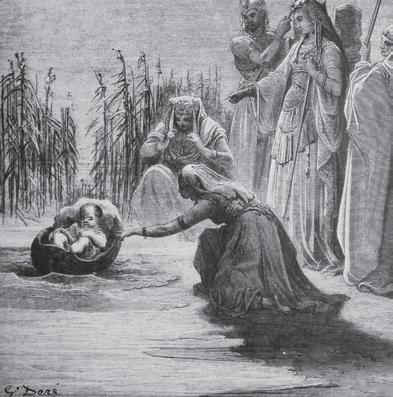


4
BCE SPLITTING OF THE SEA EGYPT ROUTE OF THE EXODUS JOURNEY TO ISRAEL MOSES RUNS TO MIDYAN
1750 1700 1600 1500
1314 BCE


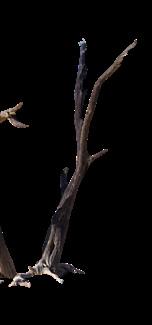
Exactly 1 year before the Exodus, G-d appears to Moses in a burning bush and orders him to return to Egypt and liberate the Jews. Moses appears before Pharaoh and relays G-d’s instruction, but Pharaoh refuses.

1314 BCE
9.5 months before the Exodus, the Ten Plagues commence.


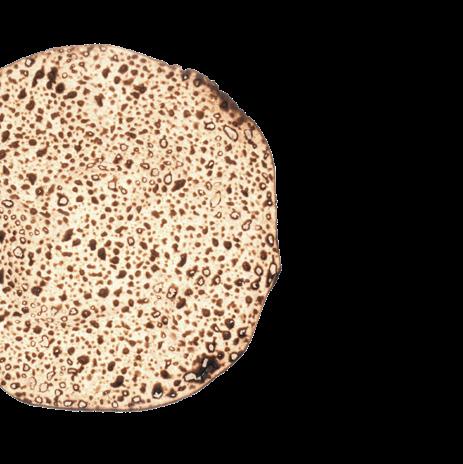
1314 BCE
On Rosh Hashanah, as the 3rd plague commences, Egypt loses control of its Jewish slaves, who are henceforth free of oppression.
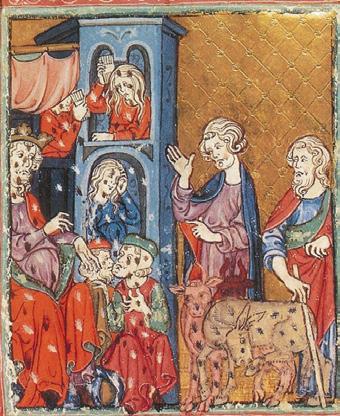
1313 BCE
On the eve of the 15th of Nisan, Jews eat the Paschal lamb and celebrate the first Passover seder in history. At the stroke of midnight, the 10th plague strikes all Egyptian firstborns, but passes over the Jewish homes. Jews spend the night collecting valuables from their Egyptian neighbors and baking matzah for their journey. At midday, the Jews leave Egypt.

1313 BCE
On the 1st of Nisan, G-d instructs the Jews to designate a Paschal lamb to be eaten on the eve of their Exodus.

1313 BCE
On the 10th of Nisan, the Egyptian firstborns demand that the Jews be liberated. When Pharaoh refuses, a civil war ensues.
1313 BCE
On the 14th of Nisan, Jews slaughter the Paschal lamb and paint their doorposts with its blood.

1313 BCE
On the 21st of Nisan, Pharaoh and his army reach the Jews at the Sea of Reeds. G-d splits the sea miraculously, the Jews pass through, and the pursuing Egyptians drown.
1313 BCE
1 month after the Exodus, the matzah provisions run out and G-d commences a miraculous daily ration of heavenly manna that continues for 40 years.
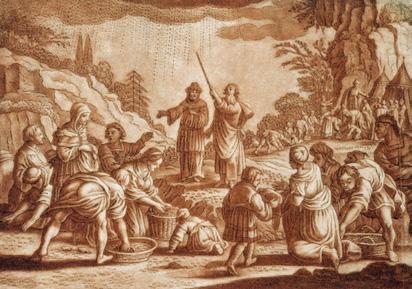


1313 BCE
On the 6th of Sivan, seven weeks after the Exodus, the Jews receive the Ten Commandments at Mount Sinai.



SOURCES
Mechilta , Shemot 12:40, 12:41; Yalkut Shimoni , Shemot 1; Tanchuma , Shemot 8, Shemot 2:11–15; Rashi, Shemot 6:16; Rabbeinu
10:5;
5
1400 1314 1313
NISAN ADAR SHEVAT TEVET KISLEV CHESHVAN TISHREI
IYAR SIVAN TAMMUZ AV ELUL
MOUNT SINAI
CANAAN
MEDITERRANEAN SEA
MIDYAN
SINAI RED SEA
Bechaye, Shemot
Talmud, Rosh Hashanah 11a, Sotah 12a, Kidushin 38a, and Shabbat 86b.
GOSHEN EDOM MOAB
NILE RIVER

Passover Messages from the Lubavitcher Rebbe
Instantaneous Transformation
One of the instructive messages of the Yom Tov of Pesach is that a Jew has the inner capacity and actual ability to transform himself, in a short time, from one extreme to the opposite. Our Holy Scriptures and Rabbinic sources describe in detail the bitterness of the enslavement in Egypt and the nadir of spiritual depravity to which the enslaved Jews had sunken in those days.
Enslaved in a country from which even a single slave could not escape; completely in the power of a Pharaoh who bathed in the blood of Jewish children; in utmost destitution; broken in body and spirit by the meanest kind of forced labor—suddenly Pharaoh’s power is broken; the entire people is liberated; the erstwhile slaves emerge from bondage as free men, bold and dignified “with an outstretched arm” and “with great wealth.”
Likewise is their spiritual liberation in a manner that bespeaks a complete transformation. After having sunk to the 49th degree of unholiness, to the point of pagan idolatry—they suddenly behold G‑d revealed in His full Glory, and only a few weeks later they all stand at the foot of Mount Sinai on the highest level of holiness and prophecy, and G‑d speaks to each one of them individually, without any intermediary, not even that of Moshe Rabbeinu, and declares: “I am G‑d, thy G‑d!”
The lesson is highly instructive:
No matter what the status of the Jew is, individually or collectively; no matter how gloomy the position appears to be in the light of human appraisal, the Jew must remind himself every day of Yetzias Mitzrayim [the Exodus from Egypt]—and strive effectively towards complete liberation and freedom, in a bold manner (“with an outstretched arm”) and to the fullest attainment (“with great wealth”): freedom from all shackles and obstacles in escape from his “Mitzrayim,” [Egypt] in order to reach the height of “priestly kingdom and holy nationhood,” through Receiving the Torah in all respects “as in the days of your liberation from Mitzrayim.”
There must be no pause and no hesitation on this road; there must be no resting on one’s initial accomplishments; one must go on and on, higher and higher, until one apprehends and experiences the call: “I am G‑d, thy G‑d!”
Public letter, 1959
Ongoing Freedom
From the day on which the Jewish people came out of Egypt, out of the house of bondage, they were taken out forever of the category of slavery, transposed into a new category, that of free men. However, the transition from slavery to freedom is not a onetime happening, but a continuous process. It demands frequent and constant reflection so as to experience once again, in a personal way, the coming out from slavery into freedom, and to make the proper conclusions therefrom, conclusions that have to be expressed not only in thought and in words but especially in a deep penetrating feeling which permeates the whole being, down to actions, to a corresponding conduct in all details and aspects of the everyday life.
Hence, although the Exodus from Mitzrayim [Egypt] of each and every Jew, together with their possessions, etc. took place in one day, the true liberation, the spiritual liberation, including also from all constraints and limitations, is something that is accomplished through daily reflection and remembrance, as it is written, “In every generation, and in every day, a Jew should consider himself as though he personally came out this day from Mitzrayim.”
Public letter, 1982
6
Passover Checklist
Seder Checklist
Q Seder plate
Q Shemurah matzah
Q Wine/grape juice
Q Hard-boiled egg
Q A roasted piece of meat or poultry, e.g., chicken neck
Q Romaine lettuce
Q Ground horseradish
Q Charoset (mixture of fruits and nuts; e.g., apples, pears, walnuts)
Q A seder-plate vegetable; e.g., cooked potato or raw onion
Q Saltwater
Q Candles
Q Haggadah
Beware of Chametz !
Throughout the festival of Passover, the Torah forbids the owning, eating, or derivation of any benefit from chametz. Chametz, or “leaven,” refers to any food in which grain and water come in contact long enough to possibly ferment.

Commercially produced foods used during the festival should therefore be certified “Kosher for Passover.” And in the weeks before the festival, we remove all chametz from our homes. On the night before Passover—this year, we perform this on Sunday evening, April 21—we conduct a search for any remaining chametz; on the following morning, we burn what we found and renounce all ownership of any leaven that may have escaped our notice.
Chametz that one wishes to have after Passover should be sold to a non Jew for the duration of the holiday. This sale must be enacted properly; to sell online, see the web address on page 19.
7
The Eight Items of the Seder
For the seder , a table is set with the matzah, a cup for wine, and a kaarah (plate) that holds six items. The arrangement of these six items varies with local tradition; the Chabad custom is illustrated below— along with clarification about each item and additional insights.
A Matzah The Torah instructs us to eat matzah on Passover eve to recall the incredible speed with which G d extracted the Jews from Egypt. Our ancestors did not have time for the dough they had prepared to rise, and on their first stop outside of Egypt they hurriedly baked it into matzah. We use three matzahs for the seder
It is especially preferable to use handmade shemurah matzah: it is circular, without start or end, symbolizing G d’s infinity; its grain is protected against contact with water from the time of its harvesting; and it is handmade, replicating the matzah baked in Egypt and ever since.
See “The Bread of Authenticity.”
B Wine For the seder, the sages ordained that each person drink a total of four cups in the course of the proceedings. If wine is unworkable due to young age, health, or other factors, grape juice may be used.
C Zero’a (“arm”); a small roasted segment of meat or poultry. Some use a shank bone; others, a chicken leg or neck. It recalls the Passover offering in the Jerusalem Temple, itself a commemoration of the Paschal lamb eaten in Egypt. This item is not eaten at the seder.

8
A B C D E F G H
D Beitzah, a cooked egg; to recall the chagigah—personal festive offering brought on all festivals, including Passover. The absence of the Holy Temple evokes a sense of mourning. Hence the egg, a traditional mourner’s food (its oval shape symbolizes the life cycle). It is a common custom to dip it into Saltwater and eat it at the start of the seder’s meal.
See “The Seed of the Redemption.”
E Maror, “bitter herbs,” invoke the bitter agonies of servitude. Maror’s precise identification is debated; prevailing customs call for romaine lettuce, horseradish, or both. Note that romaine is not bitter unless it is left unharvested for too long; similarly, our ancestors arrived in Egypt as royal guests of their relative (Joseph, the viceroy), but as their stay lengthened, their fate became increasingly bitter.
F Maror a second helping, because maror is used twice during the seder
See “Channeling Bitterness.”
G Charoset, “edible clay”; a mixture of ground raw fruit and nuts with a dash of wine to recall the thick mortar with which our enslaved ancestors constructed cities for Pharaoh. (The maror is dipped in charoset before it is eaten.)
H Karpas, a vegetable. Prevalent options include celery, parsnip, radish, cabbage, raw onion, or cooked potato. It is dipped in Saltwater during the seder to pique the curiosity of children (of all ages!).
See “From Soil to Soul.”
THE BREAD OF AUTHENTICITY
Bread and matzah are both made from the same dough, but while bread has undergone a process of fermentation and changed its appearance, matzah still retains its original form. Matzah symbolizes the key to Jewish survival in the Egyptian exile: remaining true to their beliefs and values despite the oppression they were subjected to. Matzah points the way forward for us in all areas of our lives—remain loyal to who you really are and don’t become a puppet to the whims of the time or environment. This is the path to redemption.
Rabbi Yehudah Aryeh Alter of Ger (1847–1905), Sefat Emet, Pesach 5658
THE SEED OF THE REDEMPTION
A freshly laid egg appears to an uninformed onlooker as an end product. In truth, it is merely a preparation for the subsequent emergence of an entire creature—a live chick. Similarly, the Exodus appeared to be a completed achievement, but in truth, it merely set in motion the preparations for our final Redemption.
Rabbi Yaakov Leiner of Izhbitz (1814–1878), Seder Haggadah, Sefer Hazemanim, Shulchan Orech
CHANNELING BITTERNESS
Our passion for performing goodness is symbolized by the matzah, whereas our inclination towards wicked choices is represented as maror, for its products are indeed bitter. During the seder, we perform korech—combining matzah and maror. This represents our objective: to unite our passions in G-d’s service by inspiring our evil inclination to embrace the directions of our good inclination, thus forming an upgraded force for goodness.
Rabbi Moshe Alshich (1508–1593), Shemot 13:11
FROM SOIL TO SOUL
Honest reflection on our spiritual lowliness could lead us to consider ourselves unworthy of G-d’s love. But look at this karpas vegetable! It was buried in dirt with only its leaves piercing the soil. And now it graces a seder table in G-d’s service. G-d did the same with our ancestors, and He will do it for us as well. We can rise from a spiritually vegetative state, rise from the dirt, join the King’s table, and reach tremendous heights.
Rabbi Yerachmiel Yisrael Danziger (1853–1910), Yismach Yisrael, Haggadah Shel Pesach, Karpas
9
The Fifteen Steps of the Seder
1
KADESH ׁשׁ דֵקַ
Sanctify · Recite the kidush over the first cup of wine. If you cannot drink wine, grape juice may be used.
It is appropriate for women and girls to light the festival candles on/near the seder table before sunset (and after nightfall on the second night). See p. 19 for the candle lighting blessings.
While drinking the four cups of wine or eating matzah, we recline (lean to the left) as a sign of freedom and luxury.

2 URCHATZ ץחַרְוּ
Cleanse Ritually wash your hands (as before eating bread), but without reciting a blessing.


3 KARPAS ספַּרְכַּ
Greens · Eat a small piece of vegetable dipped in saltwater in order to stir the children’s curiosity, so that they ask about tonight’s unusual practices. In addition, dipped appetizers were a practice of royalty, hence a sign of freedom, whereas saltwater evokes the tears of our enslaved ancestors.

4 YACHATZ ץחַי
Divide · Break the middle matzah in half. Put aside the larger half to be eaten at the end of the meal (Step 12— afikoman); reinsert the smaller half between the two whole matzahs; it is the symbolic “bread of poverty” over which we retell the story of the Exodus.
Some use the afikoman to keep the children sederfocused by appointing them as afikoman guardians and suspending it over their shoulders—reminiscent of the unleavened dough that accompanied our ancestors from Egypt, “bundled in their robes upon their shoulders” (Exodus 12:34). Others hide the afikoman and reward the child who finds it.
5
MAGID דֵיגִמַ
Tell · Pour the second cup of wine. If there are children present, they pose the Four Questions to the adults. If not, the adults pose them to each other. Those who are celebrating alone pose them aloud to themselves.
In response, read the Haggadah’s narrative of the Exodus that incorporates history, textual analysis, prayers, and songs. For selected highlights, see pp. 12–13.
At the conclusion of this step, drink the second cup of wine.

6 RACHTZAH הצָחַרְ
Wash · Wash your hands ritually and recite the blessing that concludes with al netilat yadayim.

10
7 MOTZI איצָוּמַ
Bring Forth · In preparation for eating the matzah, touch the three matzahs and recite the blessing Hamotzi —“Blessed are You G d . . . who brings forth bread from the earth.” Proceed immediately to the next step.

8 MATZAH הצָמַ
Unleavened Bread Touch
the top two matzahs and recite tonight’s unique blessing over “the eating of matzah.” Eat a piece from each of them.
Matzah recalls the haste with which our ancestors left Egypt. There was no time to allow their dough to rise, so they hurriedly baked it while it was unleavened. For the blessings recited over the matzah, see p. 13.

9 MAROR רְוּרְמַ
Bitterness · Recite the blessing over the maror, bitter herbs, symbolizing the bitterness of slavery. Before eating, dip it in charoset—the paste resembling the mortar used by our ancestors in forced labor.

10 KORECH ךְרְוּכַּ
Wrap · Dip a second portion of bitter herbs in charoset and place it between two pieces of matzah (use the bottom matzah of the aforementioned three in the Motzi step) to create a matzah maror sandwich.
11 SHULCHAN ORECH
ךְרְוּע ןחַלְשׁ
Set Table · Enjoy a festive meal. It is customary to begin with the egg from the seder plate.
12 TZAFUN ןוּפַּצָ
Hidden · Retrieve and eat the afikoman (see step 4), which represents the original afikoman (“dessert”) eaten at the end of the seder meal—the meat of the Passover lamb.

13 BERACH ךְרְבֵּ
Bless · Recite the Haggadah’s “Grace after Meals” over the third cup of wine, and then drink the wine.

14 HALLEL לְלְה
Praise Pour the fourth cup of wine. Pour a fifth cup (just one for the table, not for each individual). This is not consumed; it is the Prophet Elijah’s Cup, demonstrating that, in addition to the four cups of our past liberation, we anticipate our future, ultimate Redemption that will be heralded by Elijah the Prophet.
Open the door of your home for the passage indicated in the Haggadah; it signifies trust in G d’s protection, as well as our longing to greet Elijah as he announces our final Redemption.
Recite the Hallel (psalms of praise) to thank G d for the miracles of the Exodus.
15 NIRTZAH הצָרְנִ
Accepted Having fulfilled the seder’s steps as prescribed, we are confident that G d accepts our performance. In conclusion, we joyously proclaim: “Next Year in Jerusalem!”
11
Essential Passages of the Haggadah
Mah Nishtanah
Call for Curiosity
G-d instructed His liberated nation to discuss the Exodus on this night. We begin with curiosity-arousing inquiries—for progenies to pose to parents, and for individuals to ask themselves.

What makes this night different from all [other] nights?
On all nights-we need not dip even once; on this night we do so twice!
On all nights we eat chametz or matzah, and on this night only matzah.
On all nights we eat any kind of vegetables, and on this night maror!
On all nights we eat sitting upright or reclining, and on this night we all recline!
Avadim Hayinu
Three-Sentence Summary
This is a lead-in to the Haggadah that sums up tonight’s story, mission, and scope of duty.

We were slaves to Pharaoh in Egypt, and the L-rd, our G - d, took us out from there with a strong hand and with an outstretched arm. If the Holy One, blessed be He, had not taken our ancestors out of Egypt, then we, our children and our children’s children would have remained enslaved to Pharaoh in Egypt. Even if all of us were wise, all of us understanding, all of us knowing the Torah, we would still be obligated to discuss the Exodus from Egypt; and everyone who discusses the Exodus from Egypt at length is praiseworthy.
12
המ הנתשנ ונייה םידבע
Rabban Gamliel
Edible Messages
This section is indispensable. Reading it satisfies tonight’s verbal obligations, and in clarifying the seder’s edible duties, it solves questions posed at the seder’s start.
ןבר לאילמג
Rabban Gamliel used to say: Whoever does not discuss the following three things on Passover has not fulfilled his duty, namely: Passover (the Passover sacrifice), Matzah (the unleavened bread) and Maror (the bitter herbs).

חספ The Passover lamb that our ancestors ate during the time of the Beit Hamikdash: For what reason [did they do so]? Because the Omnipresent passed over our ancestors’ houses in Egypt, as it is said: “You shall say: It is a Passover offering to the L-rd, because He passed over the houses of the Children of Israel in Egypt when He struck the Egyptians with a plague, and He saved our houses. And the people bowed and prostrated themselves.”

הצמ This matzah that we eat: For what reason? Because the dough of our ancestors did not have time to become leavened before the King of the kings of kings, the Holy One, blessed be He, revealed Himself to them and redeemed them. Thus, it is said: “They baked matzah cakes from the dough that they had brought out of Egypt because it was not leavened; for they had been driven out of Egypt and could not delay, and they had also not prepared any [other] provisions.”
Hold the three matzahs (while covered with the cloth) and recite the following:
BRACHOT ON MATZAH
Baruch atah Ado‑nai, Elo‑heinu melech ha’olam, hamotzi lechem min ha’aretz.
Blessed are You, L-rd our G-d, King of the universe, who brings forth bread from the earth.
Let go of the bottom matzah and recite the following, bearing in mind that it also applies to the eating of the korech sandwich, and to the eating of the afikoman:
Baruch atah Ado‑nai, Elo‑heinu melech ha’olam, asher kideshanu bemitzvotav, vetzivanu al achilat matzah.
Blessed are You, L-rd our G-d, King of the universe, who has sanctified us with His commandments and commanded us concerning the eating of matzah.

רורמ This maror that we eat: For what reason? Because the Egyptians embittered our ancestors’ lives in Egypt, as it is said: “They made their lives bitter with hard service, with mortar and with bricks, and with all manner of service in the field; all their service that they made them serve with rigor.”
13
ךְלְמַ וּנִיהלְ־א ,ינִדֵ־א התָּא ךְוּרְבֵּ .ץרְאה ןמַ םחַלְ איצָוּמַה ,םלְוּעה
ךְלְמַ וּנִיהלְ־א ,ינִדֵ־א התָּא ךְוּרְבֵּ ,וּיתָּוּצָמַבֵּ וּנִׁשׁ דֵקַ רְׁשׁ א ,םלְוּעה .הּצָ מַ תָּלְיכַּא לְע וּנִוּצָוּ
Questions for Discussion
Enliven your seder by posing and discussing the following questions with family and friends.
QWhat do you think?
What are some pedagogic lessons we can learn from the structure of the seder ?
When you think of Passover, which one person comes to mind more than any other?

What is your funniest seder memory?

Matzah symbolizes commitment, while wine symbolizes appreciation. In what ways are these traits important for one’s relationship?


Can you suggest a lesson that can be derived from Hillel’s korech sandwich?
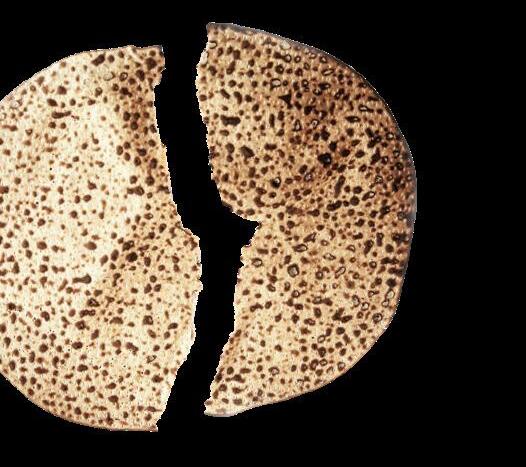
What is a unique Passover custom or tradition in your family?
What do you enjoy most about Passover?
What are some dos and don’ts for dealing with the Pharaohs of our times?


In what way are slavery and freedom relevant to our lives today?
14
Do You Know?
Who were Shifrah and Puah?
What is their association with the Passover story?

Our sages instructed that in each generation, we must view ourselves as if we personally experienced the Exodus.
What does this mean?
How is it possible?
There were eras in which Jews refrained from using red wine at the seder
When was this, and why?

What is the oldest extant Haggadah?

The Torah tells us to recall the Exodus daily (Deuteronomy 16:3).
So what is unique about the mitzvah to retell the story of the Exodus on Passover eve?
5 We can satisfy our daily obligation with a mental recollection, and as briefly as we wish. By contrast, our Passover recollection must be (a) verbal, (b) elaborate, and (c) delivered in response to an inquiry.
4 The framework of our —arrangedHaggadah as an exposition to Deuteronomy 26:5–8—is already attested to in the Mishnah (Pesachim 10:4), which was itself redacted around the year 200 CE. The oldest surviving Haggadah manuscripts were discovered in the Cairo Genizah and (using paleographical considerations) have been dated to the eleventh century. One manuscript housed at the University of Pennsylvania (Halper 211) contains most of the ;Haggadah fragmented selections from a different manuscript are stored at the JTS Library (MS 9560).
ate because the Bible considers it fancier than white wine. However, he adds that in his day, the Jews of Poland avoided red wine for the .seder He cryptically notes that contemporary antisemites, associating the wine’s redness with blood, charged that Jews murder Christian children in order to mix their blood into the matzah (and wine). This ridiculously false but deadly claim caused much oppression and many massacres of Jews. (Today, the original practice of seeking red wine as an initial preference has been restored.)
3 Red wine is preferred for the four cups, according to the Code of Jewish Law Orach( Chayim 472:11). A seventeenth-century commentator to the Code, Rabbi David Segal (d. 1667), notes that red wine is appropri -
others. Our body then becomes a companion instead of a captor.
to bond with the infinite G-d through performing a mitzvah, studying Torah, and acting with kindness to
2 One interpretation: The true “we” is not our -cor poreal selves, but our Divine souls. Our souls are trapped and enslaved within a body that is antithetical to spirituality. It is our duty to facilitate its exodus, which is achieved by permitting our souls
in his biblical commentary Keli ,Yakar explores the possibility that they were Egyptian women who risked their lives to save innocent Jews.
A Talmudic tradition (Sotah 11b) identifies the midwives as a mother-daughter team: Shifrah was Moses’s mother, Jochebed; and Puah was her daughter, Miriam. Rabbi Efraim of Luntshitz (1550–1619),
der all male Hebrews at birth, but they heroically disobeyed. Pharaoh instead had his forces throw Jewish babies into the Nile.
1 Shifrah and Puah ran midwife services for our ancestors in Egypt. Pharaoh ordered them to -mur
Answers
15
.
The Haggadah throughout History
The Passover Haggadah relates the story of the birth of the Jewish people. Said to be the most popular Jewish book in history, the publication history of the Haggadah is the story of the Jewish people over the ages, with over three thousand printed editions and manuscripts created in all of the eras and places were Jews have lived. Four notable Haggadot with their own fascinating stories are surveyed here.

C. 1350 Sarajevo Haggadah
The “Sarajevo Haggadah” belongs to a genre of Sephardic Haggadahs produced in northern Spain. In addition to its stunning artwork, it has also achieved fame due to the extraordinary story of its survival: It was removed from the Iberian Peninsula by Jews expelled from there in 1492 and brought to Italy, where it was eventually sold to the National Museum in Sarajevo. Later, to save it from destruction by the Nazis during World War II, it was smuggled out of Sarajevo and given to a Muslim cleric who hid it in a mosque. In 1992, it also survived the Bosnian War.
C. 1300 Birds’ Head Haggadah
The “Birds’ Head Haggadah” was illustrated by a scribe named Menachem and produced in the Upper Rhine region of Southern Germany in the early fourteenth century. It is the oldest surviving illuminated Ashkenazi Passover Haggadah. It earned its “Birds’ Head” moniker from a perplexing feature: all Jewish men, women, and children depicted in the manuscript wear bird faces with beaks atop their human bodies, which has triggered a variety of theories. The characters wear medieval German Jewish clothing, including the pointed “Jewish hat” mandated by the Church beginning in the thirteenth century.

In the Sarajevo Haggadah, the liturgical text is preceded by an entire series of illustrations depicting biblical scenes, from Creation through the Exodus and Mount Sinai. This page depicts the Jewish people crossing the Red Sea.
16
This page displays the Dayenu song of praise, and depicts scenes from the Jewish nation’s post-Exodus experiences in the Sinai Desert—including individuals gathering the miraculous manna and Moses standing atop Mount Sinai to receive the Tablets from G-d’s hands.

This page presents the kidush liturgy that marks the formal start of the seder. The bottom of the page depicts a horseman hunting hares—an amusing reminder of the correct order of blessings for a Passover that coincides with Saturday night (whereby kidush is combined with the Havdalah prayer). The Hebrew mnemonic for the correct order is YaKNeHaZ, which sounds awfully similar to the German expression jag den has—“hunt the hare.”
1526 Prague Haggadah
The 1526 “Prague Haggadah” is the earliest fully illustrated printed Haggadah. Its margins contain instructions and details of Jewish law for conducting the seder, with supplemental selections of Haggadah commentary. The woodcut illustrations included in this work bore enormous influence on the subsequent history of Haggadah illustration.
1943 Holocaust Haggadah
Before World War II, Shmaryahu and Sara Landau were wealthy business owners and community figures who lived with their children Elimelech, Yehudah, and Tamar in Borislav, Poland (now part of Ukraine). After the Nazi invasion, Borislav’s Jews were confined to a ghetto, and groups of them were systemically rounded up and massacred. In February 1943, the Landau family found refuge with the local Polish Kushiotko family, who hid them in their home.
On Passover, the Kushiotko family allowed the Landaus to kasher their oven and prepare matzah from grain that the Landaus ground in a coffee grinder. Shmaryahu Landau recited the text of the Haggadah from memory to his son Elimelech, who wrote it down and decorated the text. After the war, the Landau family immigrated to Israel and gifted their Haggadah to the Yad Vashem Holocaust History Museum.

This page presents the Mah Nishtanah questions traditionally posed by children attending the seder
17
Passover Insights on Education

Put Your Mouth Where Your Matzah Is
The Torah requires parents to provide Exodus education on the anniversary of the event. More specifically, it must be delivered at night during the seder, while the matzah and bitter herbs are set out on the table.
Therein lies the secret of Jewish education: Do not offer abstract ideas divorced from reality. Even on the anniversary, simply explaining the event is inadequate. First put the matzah on your table, and then talk! You can provide your children with deeper appreciation for a mitzvah, but only when they see you—their parent—actively observing it.
Sarah Schenirer (1883–1935) Em BeYisrael, p. 74
An Educator’s Gain
The Torah says, “In order that you may tell in the ear of your child and your grandchild the things I have done in Egypt, and the wonders I performed among them, so that you may know that I am G d” (Shemot 10:2).
When we read this verse in the original Hebrew, we notice that the first “you” is written in the singular (tesaper), while the second “you” is written in the plural (vidatem). Why this change? One possible answer is that genuine educational dialogue allows the one transmitting knowledge to also learn and grow.
Nechama Leibowitz (1905–1997) Studies on the Haggadah: From the Teachings of Nechama Leibowitz (New York: Urim Publications, 2002)
The Sanctity of a Question
Teaching the young to ask questions is an essential feature of Pesach, so much so that the Haggadah the narration—must be in response to a question from a child. If there is no child present, adults must ask one another, and if one is eating alone, one must ask oneself. In Judaism, to be without questions is a sign not of faith, but of lack of depth. “And the [child] who does not know how to ask,” you must begin to teach him how. . . . Asking a question is itself a profound expression of faith in the intelligibility of the universe and the meaningfulness of human life. . . . Far from faith excluding questions, questions testify to faith—that history is not random, that the universe is not impervious to our understanding, that what happens to us is not blind chance. We ask, not because we doubt, but because we believe.
Rabbi Lord Jonathan Sacks (1948–2020) Rabbi Jonathan Sacks’s Haggadah: Hebrew and English Text with New Essays and Commentary (New York: Continuum, 2006), pp. 105–106
18
*Light only from a preexisting flame.
**To sell your chametz online, visit ChabadWinnipeg.org/sellchometz

Baruch atah Ado‑nai, Elo‑heinu melech ha’olam, asher kideshanu bemitzvotav, vetzivanu lehadlik ner. . .
FOR SHABBAT
shel Shabbat kodesh.
FOR HOLIDAYS
shel Yom Tov.
ON THE FIRST TWO NIGHTS OF PASSOVER ADD
Baruch atah Ado‑nai, Elo‑heinu melech ha’olam, shehecheyanu, veki’yemanu, vehigi’anu lizman hazeh.
Blessed are You, L-rd our G-d, King of the Universe, Who has sanctified us with His commandments, and commanded us to kindle the. . .
FOR SHABBAT light of the holy Shabbat.
FOR HOLIDAYS Yom Tov light.
ON THE FIRST TWO NIGHTS OF PASSOVER ADD
Blessed are You, L-rd our G-d, King of the Universe, Who has granted us life, sustained us, and enabled us to reach this occasion.
19
ךְ לֶ מֶ וּני הֵֹ לֶ ־ אֱ י נֹדֹ־ אֱ הֵ תָּ אֱ ךְ וּר בָּ , וּ י תָּ וּ צְ מֶ בָּ וּנ �שָׁ דֹ קִ ר שָׁ אֱ ,ם לֶ וּ ע הֵ ...ר נ קִ י לֶ דֹ הֵ לֶ וּנ וּ צְ וּ FOR HOLIDAYS . בָּ וּ ט םֹוּ י לֶ שָׁ FOR SHABBAT . �שָׁ דֹ קִ תָּ בָּ שָׁ לֶ שָׁ ON THE FIRST TWO NIGHTS OF PASSOVER ADD ךְ לֶ מֶ וּני הֵֹ לֶ ־ אֱ ,י נֹדֹ־ אֱ הֵ תָּ אֱ ךְ וּר בָּ וּנ ע י גִ הֵ וּ וּנ מֶ י קִ וּ וּנ י חֱ הֵ שָׁ ,ם לֶ וּ ע הֵ . הֵ זֶ הֵ ן מֶ זֶ לֶ
and Holiday Candles SUNDAY MONDAY TUESDAY WEDNESDAY THURSDAY FRIDAY SHABBAT 21 13 Nissan 22 14 Nissan 23 15 Nissan 24 16 Nissan 25 17 Nissan 26 18 Nissan 27 19 Nissan Passover First Day Passover Second Day Passover (Chol Hamo’ed) Passover (Chol Hamo’ed) Shabbat ends: 9:25 PM Passover (Chol Hamo’ed) 28 20 Nissan 29 21 Nissan 30 22 Nissan Passover (Chol Hamo’ed) Passover Seventh Day Passover Eighth Day Search for chametz after nightfall 9:11 PM Finish eating chametz before 11:05 AM Sell** and burn chametz before 12:16 PM at 8:16 PM Nightfall: 9:12 PM after nightfall 9:15 PM* at 8:22 PM at 8:25 PM after 9:25 PM* Holiday ends: 9:31 PM Holiday ends: 9:20 PM
Shabbat
TIMES FOR WINNIPEG, MB

$5 per family!
Geared for ages 4+!
PJ Library & Chabad Lubavitch invite you to bake your own matzah at the Model Matzah Bakery at the Jewish Learning CentreAhava Halpern Building 1845 Mathers Ave.
Sunday, March 31
10:30 am-noon
Give your child the experience of a lifetime: Make Matzah the way our forefathers did... from scratch!
Learn about the traditional customs and symbolism of the Matzah-making process, of the Seder night and Passover in general.
Pre-register by March 25: www.chabadwinnipeg.org/bakery
For more info: info@chabadwinipeg.org or 204.339.8737
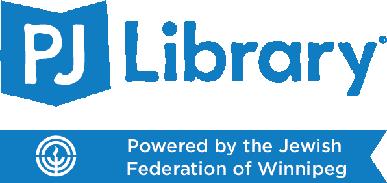

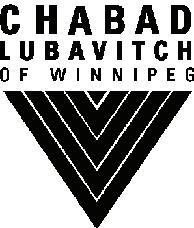

h"b
MODEL M
BAKE YO U R OWN
MAT ZAH at the
AT ZAH BAKERY




Happy Happy Passover Passover
Chag Sameach
Chag Sameach to the Community to the Community
From Ahava Halpern & Frank Lavitt
Proud supporters of Chabad Lubavitch for over 55 years!
Proud sponsors of the Boardroom & the Ahava Halpern Jewish Library & Resource Centre at the Jewish Learning Centre.



Ad i ce you can trust from a local business that supports you and your community What’s important to YOU, matters to US! mybacu.ca 387 Provencher Blvd. 1177 Portage Ave. 101-930 Jefferson Ave. 204. 982.3400 204. 927.0460 927.0450 Ask about our New-to-Canada Mortgage Programs membership open to all 2025 Corydon Ave Winnipeg, Manitoba The management and staff of Safeway Tuxedo wish you a Happy Passover



Happy Passover!
Heather
Stefanson MLA for Tuxedo 204.487.0013 tuxconst@mymts.net







Happy PASSOVER Hofit Yanev (204) 396-5185 From Excellence Fences (204) 500-3242 Booking Now For 2024 Season www.excellencefences.ca Happy PASSOVER https://hofityanev.exprealty.com JOHN ORLIKOW City CounCillor | RiveR HeigHts/FORt gaRRy WaRd orlikow.ca follow me: 510 Main street, Winnipeg, MB R3B 1B9 (204) 986-5236 | jorlikow@orlikow.ca May you always be blessed with Peace, Prosperity and Togetherness! Happy Passover. “ “







vickar.com SHOP AT PASSOVER HappyWISHING THE COMMUNITY A !חמש חספ גח 964 Regent Ave. W vickarchevrolet.ca 2325 Dugald Rd. vickarisuzutrucks.ca 1424 Regent Ave. W www.vickarnissan.ca 950 Regent Ave. W vickarmitsubishi.ca AUTO & LEISURE MOOSE JAW 1400 Lakeview Rd, Moose Jaw, SK





Notre
Ave.
MB t. 204 774 2561
1147
Dame
Winnipeg,
Winnipeg Ave.
Notre Dame Ave.
Myrtle St.



905 Shaftesbury Blvd., Winnipeg, MB The tenants and staff of Shaftesbury Park Retirement Residence would like to wish everyone a Happy Passover. Call 204.202.1863 to find out more about life at our lovely residence. Where Caring is Our Number One Concern™ PROUDLY CANADIAN www.allseniorscare.com Happy Passover

HAPPY PASSOVER
THROUGH ADVERSITY, WE FIND STRENGTH. MAY THIS PASSOVER BE A BEACON OF HOPE FOR OUR COMMUNITY.
FROM THE BOARD & STAFF of the Jewish Federation of Winnipeg
Paula Parks, President Jeff Lieberman, Chief Executive Officer & the FDR Team

jewishwinnipeg.org


CHABAD-LUBAVITCH JEWISH LEARNING CENTRE
204-339-8737
RABBIS@CHABADWINNIPEG.ORG
WWW.CHABADWINNIPEG.ORG

61805















































































































